Request a Quote
Items in Your Cart0
0Items in Your Cart
Start building your packageShop Now
Search and Recovery is the operation of finding and retrieving lost or missing persons, or the retrieval of valuable objects, such as police evidence or overboard vessel equipment. Undertaking such missions can involve a variety of methods and tools. Traditionally, those methods have included:
Hiring and deploying public safety divers Marine response units Using boats with hull-mounted side scan and down scan sonar Dragging (deploying hooks off the back of a boat and dragging the bottom of the body of water)
Methods such as bounce diving, which involves the diver going to depths up to 60 feet rapidly and repeatedly, oftentimes with as little as ten to fifteen minutes of bottom time, can be incredibly risky for divers. You don't know what that target is on the bottom. It could be a huge entanglement hazard for that diver.
In recent years, the use of ROVs (remotely operated vehicles) has significantly mitigated this risk by getting eyes underwater that are able to identify anomalies that have been located by sonar before sending a diver down into an unknown situation and potentially dangerous environment.
“When you start having to splash divers for multiple high interest points in the water, you're limited to how long the divers can stay on the bottom, to how much personnel you have on scene,” explains Shane Seagroves, Director of Emergency Services, Lee County, NC. “By introducing the ROV into that process, you're only limited to battery life.”
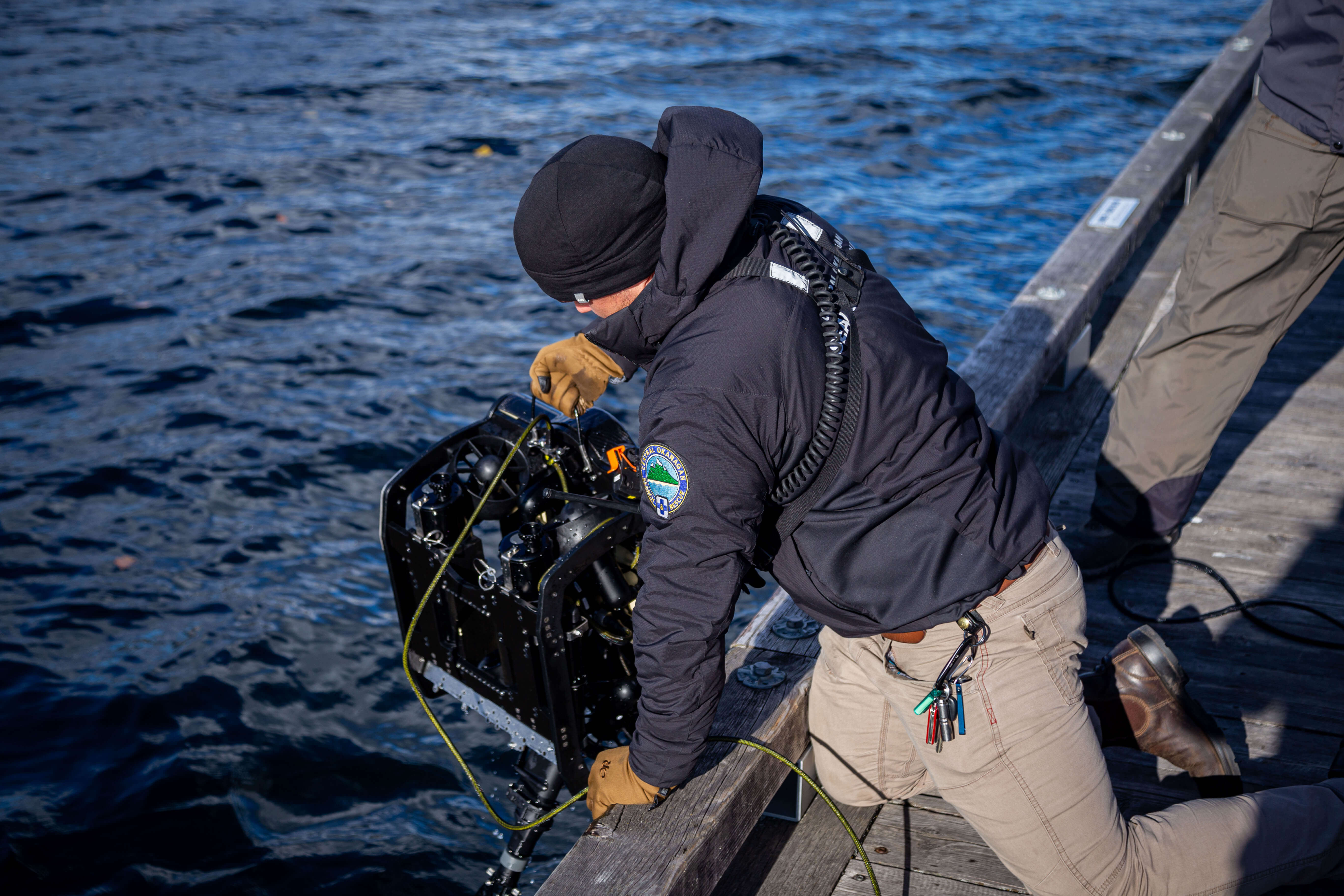
These search and recovery missions are typically conducted in emergency situations, such as boating accidents, missing persons, or lost cargo. Lost cargo can also be part of criminal investigations, where law enforcement may search for evidence or weapons that have been discarded or hidden. The goal of these missions is to locate and recover the object or person as quickly and safely as possible.
Search and Recovery missions can also be recreational activities such as commercial scuba diving, where divers may search for lost items or sunken artifacts.
With advancements in technology and robotics, it’s become more common to use underwater ROVs with attached sonar 3D imaging, high-resolution cameras, laser scanners, manipulator arms, grabber claws, and other sensors, allowing for much faster and safer recoveries.

Traditionally, a vessel is deployed that will conduct searches in specific patterns and locations, such as:
Discover cutting-edge strategies for large area search and recovery, empowering law enforcement with unparalleled safety and operational efficiency
Boats can also be equipped with tools, such as:
Sonar Equipment - hull mounted Side Scan Sonar (SSS), Forward Looking Sonar (FLS), and Multibeam Sonar (MBS) like the Blueprint Oculus that use sound waves to detect and locate objects, especially in low visibility areas.
Underwater Cameras - used to take visual images of the underwater environment, including the seabed, objects, and marine life. The cameras can be attached to the diver's helmet or mounted on a ROV.
Lift Bags - inflatable bags that are used to lift objects from the sea floor to the surface. They can be filled with air or water to adjust the buoyancy and control.
Metal Detectors - used to detect metal objects, such as weapons that may be buried in the sand or mud on the sea floor.
GPS and Navigation Systems - used to track the position and movement of search vessels, divers, and other equipment during search and recovery operations.
Fish Finders - such as Humminbird, or Lowrance, equipped with side and down imaging sonar, and accurate lake maps and charts.
The equipment used for search and recovery is highly dependent on the nature of the mission and the location in which the search is being conducted. These missions can be extremely dangerous and must be executed with proper training and strict safety protocols in place.
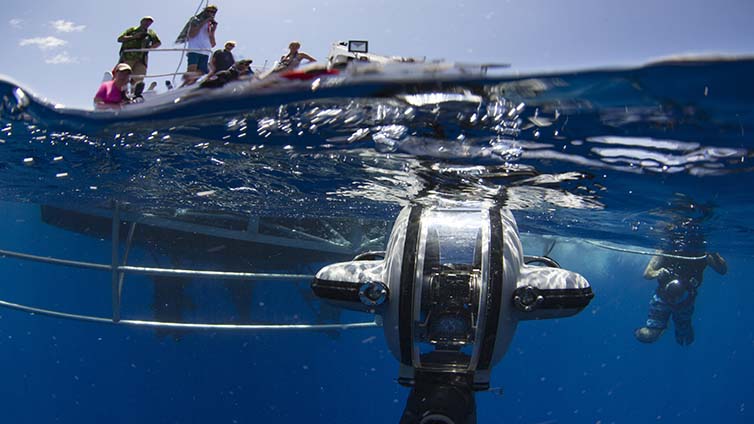
When it comes to traditional methods, divers are most commonly used for search and recovery missions. However, ROVs are growing in popularity, and can either be used in place of divers, or as an additional tool to assist divers and help make their job safer. Each method comes with its own advantages and disadvantages, so let’s quickly break down each one.
One of the main advantages that divers have in search and recovery missions is the ability to physically search for and recover objects with their hands. Being able to see and feel the environment they are working in allows for more precise retrievals, and also makes navigation in tight or difficult areas such as complex structures easier since they can quickly adapt to the environment and adjust their search patterns accordingly. Also, being able to provide more accurate assessments of the situation is extremely valuable.
The disadvantage of using divers is the inherent risk involved with such dangerous and physically demanding tasks. Any time a diver is splashed, they run the risk of decompression sickness, hypothermia, physical exhaustion, or the danger of entanglement. They are also limited in the amount of time they can spend underwater, as well as the depths they are able to reach. Visibility can also be an issue in murky water where they have limited or zero visibility, which can be incredibly dangerous for the divers.
Discover how underwater drones are transforming search and rescue operations in murky water and operations in icy water, and learn more about the challenges with these environments and their capability to provide safer alternatives.

ROVs have proven to be incredibly useful tools for conducting underwater search and recovery operations. ROVs can be controlled from a surface vessel or remote location where operators can safely search deeper and more dangerous areas without putting divers at risk. They can also be equipped with a number of modular tools to assist in search and recovery missions, such as sonar, grabber claws, laser scanners and sensors that help locate and identify objects on the sea floor, and high-definition cameras that can detect and record information.
ROVs remove the risk of injury and can be deployed in situations where it may be too dangerous for divers to enter the water. They can also operate in low visibility water, or in poor weather conditions, and can cover large areas of water quickly, as well as maneuver in tight spaces and at depths that would be difficult or impossible for humans to reach.
Limerick Marine Search and Rescue Service (LMSRS) uses a Deep Trekker ROV to assist divers and improve safety in their operations. Their treasurer, Mal Sherlock explains, “We wouldn’t be entering a diver in water that has speeds of four knots, but we can enter this unit at four knots, that would be at its maximum speed. This will negate the chance of us putting a diver into the water to endanger themselves going into a dangerous area.”
However, ROVs are limited by battery life and could require multiple trips to the search and recovery location, and can occasionally have difficulty navigating through complex environments.
Ultimately, the choice between divers and ROVs for search and recovery is highly dependent on the specific circumstances of the situation, and a combination of both is quite often the most effective approach in many cases. The strengths of each method can be leveraged to complement one another, leading to more efficient and successful outcomes.
For example, ROVs can be used to monitor divers while underwater, allowing topside support teams to have eyes on the divers and provide real-time guidance, while divers are able to perform delicate tasks and make on-the-spot decisions, leveraging their experience and expertise.

In high-risk situations, ROVs can be used to conduct preliminary assessments, identify potential dangers, or handle tasks in hazardous environments, minimizing the exposure of divers to dangerous conditions, and allowing them to perform their dives much faster and more efficiently. By utilizing ROVs for initial surveys, inspections, or simple tasks, divers can focus their efforts on more critical or complex activities, optimizing the use of resources and reducing overall costs.
Additionally, ROVs are equipped with advanced sensors, cameras, and sampling tools that can provide detailed visual data, collect samples, and perform measurements underwater. By combining the comprehensive data collection capabilities of ROVs with the situational awareness of divers, a more accurate understanding of the underwater environment can be obtained.
There are many advantages to combining both divers and ROVs in search and recovery missions, including training and skill development, efficiency, and cost-effectiveness. This integration allows for efficient utilization of resources, improved safety, enhanced data collection, and expanded operational capabilities. These are some of the many key points to consider, demonstrating how this synergy can lead to optimal results by leveraging the strengths of each approach.
“Hopefully it will change how we work and give us a better chance of recovery,” says Mr. Sherlock.
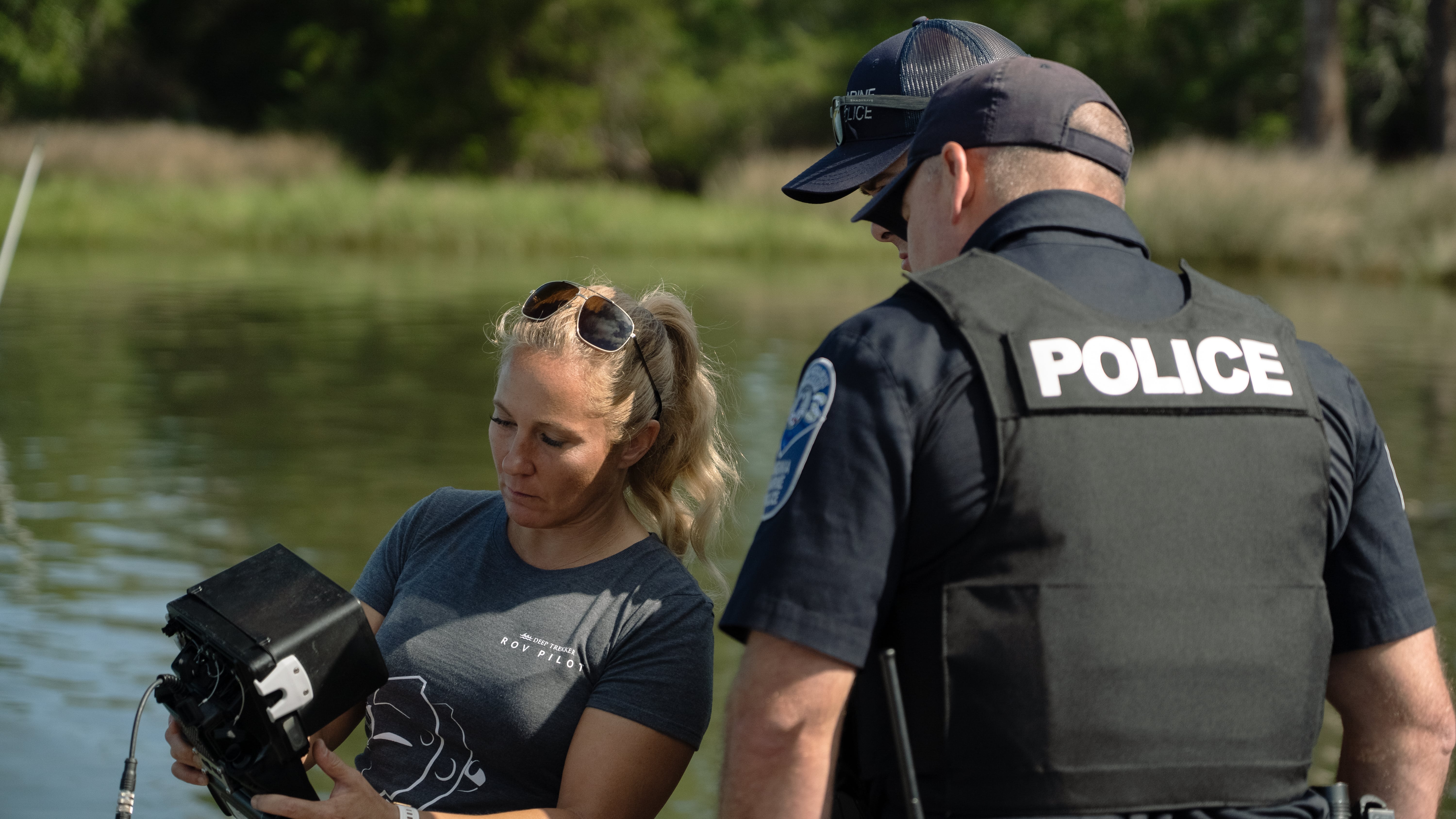
You’ll want to consider the specific goals of your mission, as well as the locations and environments you’ll be working in to determine what options you’ll want to prioritize when deciding which ROV is right for your needs.
What will you be using the ROV for? Are you searching for missing persons, lost equipment, shipwrecks, or using it for evidence recovery? Are you conducting the search in a small body of water, a large area, or a fast-moving, high-current river? These are the types of questions you’ll want to ask when making a purchase decision.
The portability of ROVs is an important factor to consider in search and recovery missions. When time is so critical to the success of a mission, it’s important that the ROV is easy to transport and quick to deploy for it to be an effective tool in your search and recovery efforts.
Other things you might want to consider are a modular design that allows you to quickly add or remove components, and power options, such as lithium-ion batteries, that make the vehicle more portable without the need for heavy or bulky equipment that could slow down the process of retrieval.

Performing search and recovery missions in unpredictable marine environments can be dangerous and quite challenging. Even when using ROVs in turbid or high-current waters, it can be a challenge to pilot the vehicle and maneuver through the water.
ROVs with high-performance thrusters are essential for maintaining control and maneuverability in strong currents during search and recovery missions and can greatly improve the ease of retrieval by allowing for more precise controls. Utilizing stabilizing systems can also be invaluable, as well as GPS systems to help navigate and locate the ROV when visibility is low.
Assessing specific technical specifications of an ROV is crucial in selecting the most suitable option. Consider the following factors when evaluating ROVs for search and recovery missions:
Evaluate the maximum depth rating of the ROV to ensure it can operate effectively in the intended search areas.
Consider the required length of the tether based on the depth and distance the ROV needs to cover during missions.
Assess the payload capacity of the ROV to determine if it can accommodate any necessary additional equipment or attachments.
Look for ROVs equipped with high-quality cameras to capture clear images and videos for effective target identification and documentation.
Evaluate the sonar capabilities of the ROV, including imaging and positioning systems, to enhance visibility and target detection in murky or dark waters.
Consider the available power options, such as battery types and capacity, to ensure sufficient operational time and endurance for the search and recovery missions.
As innovators in the ROV industry, and with over a decade of proven performance, Deep Trekker is one of the largest underwater robotics manufacturers in the world. With a lineup of cutting-edge vehicles for a variety of underwater applications, Deep Trekker ROVs are easy to use, affordable, portable, built to be durable, and highly modular, enabling fully integrated solutions for add-ons such as imaging sonars, positioning systems, and more.
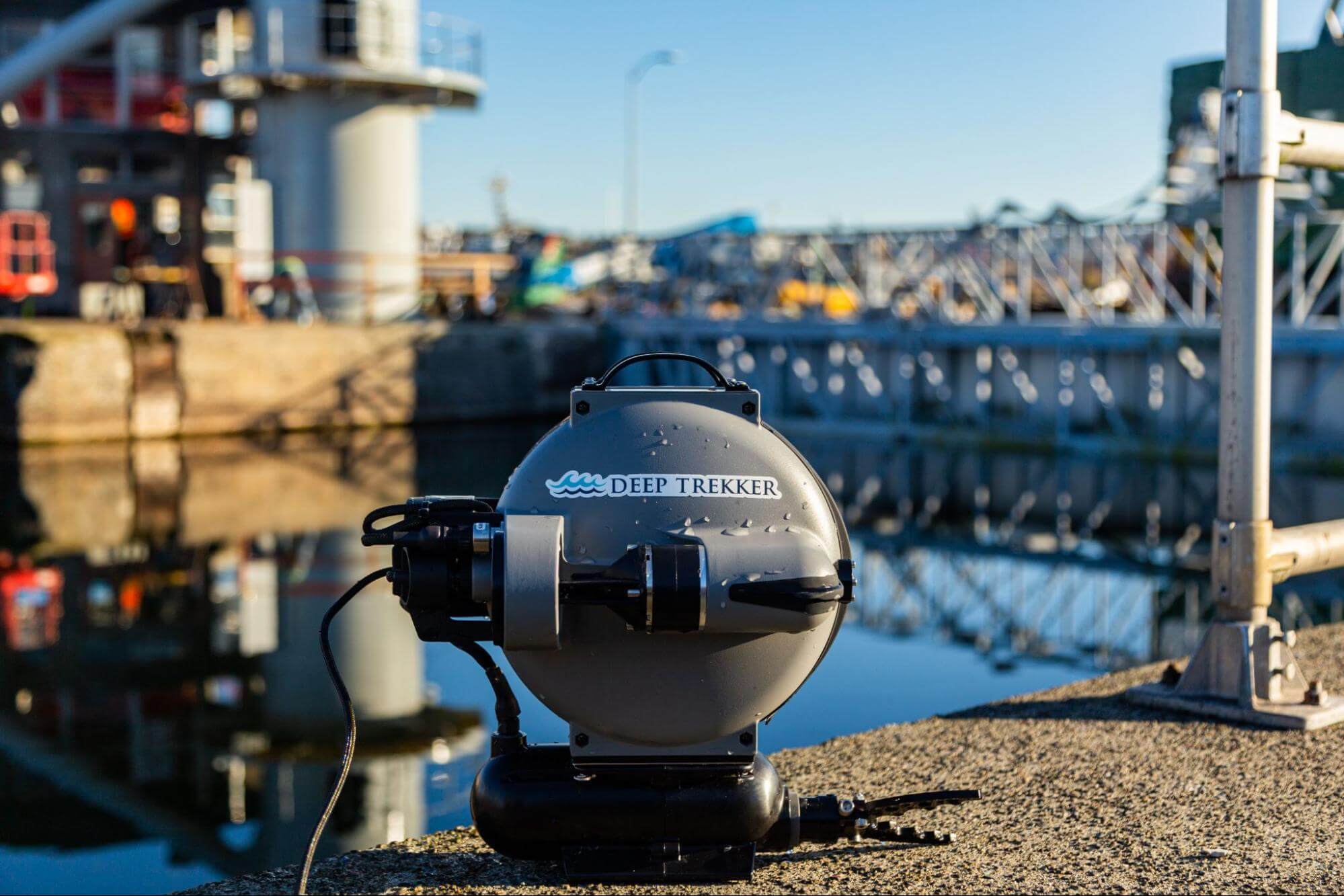
The DTG3 is renowned for its exceptional portability, making it the ultimate choice for underwater inspections on the go. This lightweight yet durable industrial-quality ROV weighs only 18 lbs and comes in a single Pelican case that can be easily transported as checked luggage. With its competitive price point, the DTG3 is a versatile tool for rapid underwater inspections.
Speed is critical in search and recovery missions, and with the DTG3 you can deploy in under 30 seconds, getting eyes underwater with the help of a crystal clear Full HD (4K upgradable), 270-degree rotating camera that offers a substantial range of view without any need to maneuver thrusters.
The DTG3 comes equipped with three thrusters and a patented pitch system that allows for flexible operations and rapid descent capabilities. Being able to deploy very quickly and get that information to first responders or dive teams can make a significant impact.
The DTG3 package includes a complete ROV system housed in a single case, including the intuitive BRIDGE integrated controller, and 64GB SD Card. This compact design enables users to take their industrial-grade underwater inspection vehicle anywhere.
The DTG3 package comes standard with a 75m tether and tether reel, but upgrades are available to extend the tether length up to 200m on the included reel or even up to 700m on a larger reel. The DTG3 also comes with three sets of LED floodlights, ensuring optimal illumination during complex or dark inspection scenarios.

The PIVOT boasts an impressive six-thruster design powered by swappable lithium-ion batteries and a 305m depth rating. As the middle child in Deep Trekker’s family of robots, it strikes that perfect balance between size and power, coming in at just 37 lbs compared to the 57 lb weight of the REVOLUTION, and with a 13.4% smaller overall body size.
The camera and tool platform on the PIVOT operates on separate rotating fields. Rotating up to 220 degrees, the camera is capable of a wide viewing range to complete a variety of tasks with crisp, high-definition 4K images and video.
The tool platform has a 97-degree rotational range, capable of housing a multitude of add-ons, giving operators the advantage of flexible imaging options and convenient tool manipulation from a stable position, providing excellent performance with USBLs, DVLs, and Imaging Sonars.
With three packages to choose from, you’ll have plenty of options to build the system that meets your needs, at a competitive price point.

The most powerful, intelligent, and stable ROV in the Deep Trekker family is the REVOLUTION ROV. Featuring six vectored thrusters and a depth rating of 305m, it is specifically designed for complex underwater missions. The REVOLUTION offers unmatched control in harsh conditions.
With a wide range of view for seamless transitions of focus points, the integrated camera and grabber arm are capable of rotating up to 260 degrees, allowing the operator to get the best angle to manipulate an object, all without changing the ROV’s position. This feature is invaluable in search and recovery missions, especially in difficult conditions or unfavorable weather.
One of the most valuable features for search and recovery missions is the rotating capability when adding an imaging sonar. With this modular add-on, you can adjust the angle to sweep targets and get precise viewing angles, and because of its stable design and vertical thrusters which enable lateral movements, the REVOLUTION provides excellent performance with USBL and Sonar.
Thanks to the quick-change battery system, it's also easy to perform on-the-spot field battery changes in under a minute.
Which Deep Trekker ROV package is best for search and recovery missions is highly dependent on the circumstances of the mission, and more importantly, the location and environment in which the search and/or retrieval is being conducted.
In relatively still water with good visibility, the DTG3 is a great tool with superior portability and ultra-fast deployment capabilities that can make getting eyes underwater quickly an easy task. However, in more complex and challenging environments, the PIVOT and REVOLUTION ROVs would be better suited tools for the job.
Let’s take a look at two packages that would be best for most search and recovery missions:

The PIVOT Expert package includes the BRIDGE integrated controller, SD Card, and the ROV itself, equipped with the 220-degree rotating camera head, six precision thrusters, and LED floodlights to illuminate your targets. You will also receive two rugged Pelican carrying cases to house the entire system for enhanced portability.
The Expert package also comes with the 97-degree tilting tool platform, capable of housing a variety of add-ons, such as the Blueprint M750D sonar, and comes included with a grabber claw. Also included is a 150m fiber optics tether with options up to 850m, and a spare battery set for quick swaps to maintain power on extended missions.
The Blueprint M750D is a dual-frequency multibeam sonar that provides high-resolution imagery up to 120m, an integrated velocimeter for improved accuracy, and a peak operating frequency of 1.2MHz. The dual frequency capability makes the M750D excellent for both short and long-range operations for effective target identification in turbid waters.
In Search and Recovery operations, First responders looking for evidence or drowning victims typically use sonar to sweep an area to identify potential targets and investigate. Cameras and divers are often unable to effectively search due to poor visibility in underwater environments. Imaging sonar is an effective tool to identify the target since side scan data does not always produce an exact location, which makes navigating back to the potential target difficult. Once the target is identified, the sonar can be used to continue to track the target as you move closer, and when you get close enough, it can even be used to perform visual verification.

The REVOLUTION NAV package includes the BRIDGE integrated controller, SD Card, and comes equipped with the 260-degree rotating camera head and grabber, LED floodlights, extended length fiber optics tether with options up to 850m, and a 10cm laser scaler for accurate estimations of object sizes. Like the PIVOT, two rugged pelican carrying cases are included to house the whole system, providing excellent portability for the REVOLUTION RAV package.
The package also includes a battery set as well as a spare set that can be efficiently swapped in just 30 seconds for extended missions, and recharged in one and a half to three hours, meaning virtually endless power if you ladder charging between uses. If you need constant power, there is a direct power option for the REVOLUTION as well as the PIVOT ROVs.
What sets the REVOLUTION NAV package apart is the addition of advanced piloting capabilities with USBL and DVL sensors. These sensors enable the ability to track the ROV on a map, log points of interest, draw a trail, plan missions, and even deploy autonomous routes with the mission planner feature. This means the NAV package can navigate to set targets and perform pre-programmed routes, allowing the pilot to focus on the camera and sonar feeds instead of the operation of the vehicle.
These sensors also have the capability to enable ‘auto-depth’ from the seafloor, as well as produce GPX and CSV files to house location data during operation. The NAV package also includes a service parts kit and an extended two-year warranty for a completely comprehensive experience.
The Blueprint M1200D multibeam imaging sonar is an optional add-on that conveniently mounts to the PIVOT and REVOLUTION for effective target identification in turbid waters. The M1200's high operational resolution features a peak frequency of 2.1MHz, an integrated velocimeter for improved accuracy, and a range resolution of 2.5mm for detailed close-range inspections. The M1200D short-range imaging provides the highest quality image in the M-series sonars and is ideal for up-close inspections.
Search and recovery missions are much more effective with an imaging sonar. ROVs that can also tilt the sonar are a huge advantage. This allows the operator to change the angle and optimize the field of view to fit any situation. The M1200D sonar offers high-quality imagery at ranges up to 30m (98ft). Experienced operators do not identify targets from further than 30m away from the target, which justifies the limited range of the M1200 in comparison to the M750 and M370 sonars since the tradeoff is enhanced clarity for superior identification.
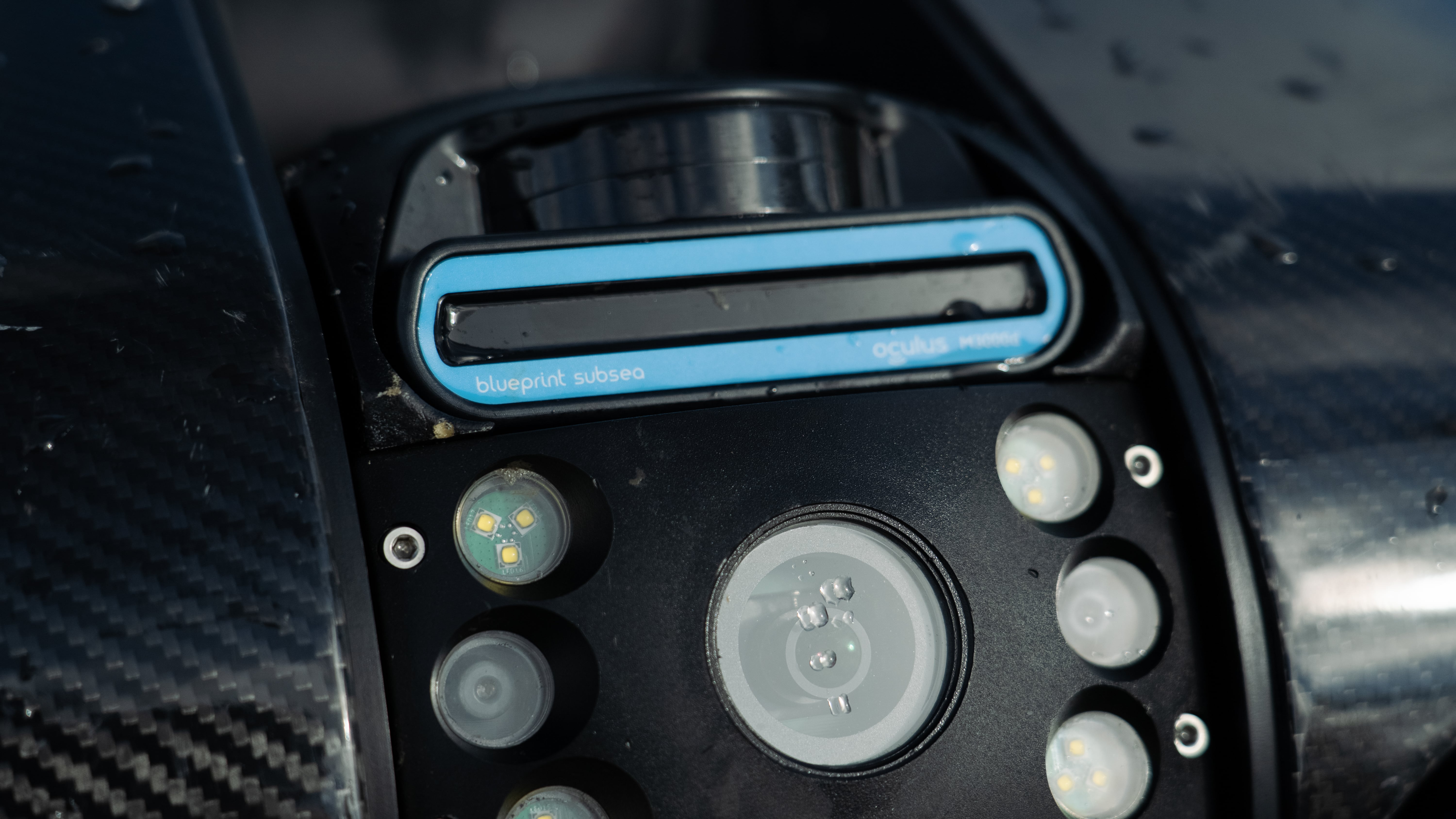
While both the PIVOT and REVOLUTION come equipped with high-resolution 4K cameras and grabber claws, there are many more options for expanding payloads and the ROV capabilities with modular add-ons. Some of the most common add-ons for search and recovery missions include:
Deep Trekker offers easy-to-use, portable, and affordable underwater ROVs, capable of handling an incredibly diverse list of tasks.
At Deep Trekker, we prioritize listening to our customers and continuously improving our ROVs to meet their specific needs. Our team of innovators, creators, expert engineers, technologists, and underwater enthusiasts is dedicated to designing cutting-edge ROVs that excel in diverse underwater tasks. We value customer feedback and use it to drive our product development, ensuring that our ROVs are tailored to meet the demands of real-world applications.
When you choose Deep Trekker, you not only get a high-quality ROV but also gain access to our experienced senior ROV team members. Our team is just an email or phone call away, ready to provide guidance, answer questions, and offer technical support whenever you need it. We believe in being a true partner to our customers, providing not only a product but also the expertise, ideas, and vision necessary to succeed in underwater missions.
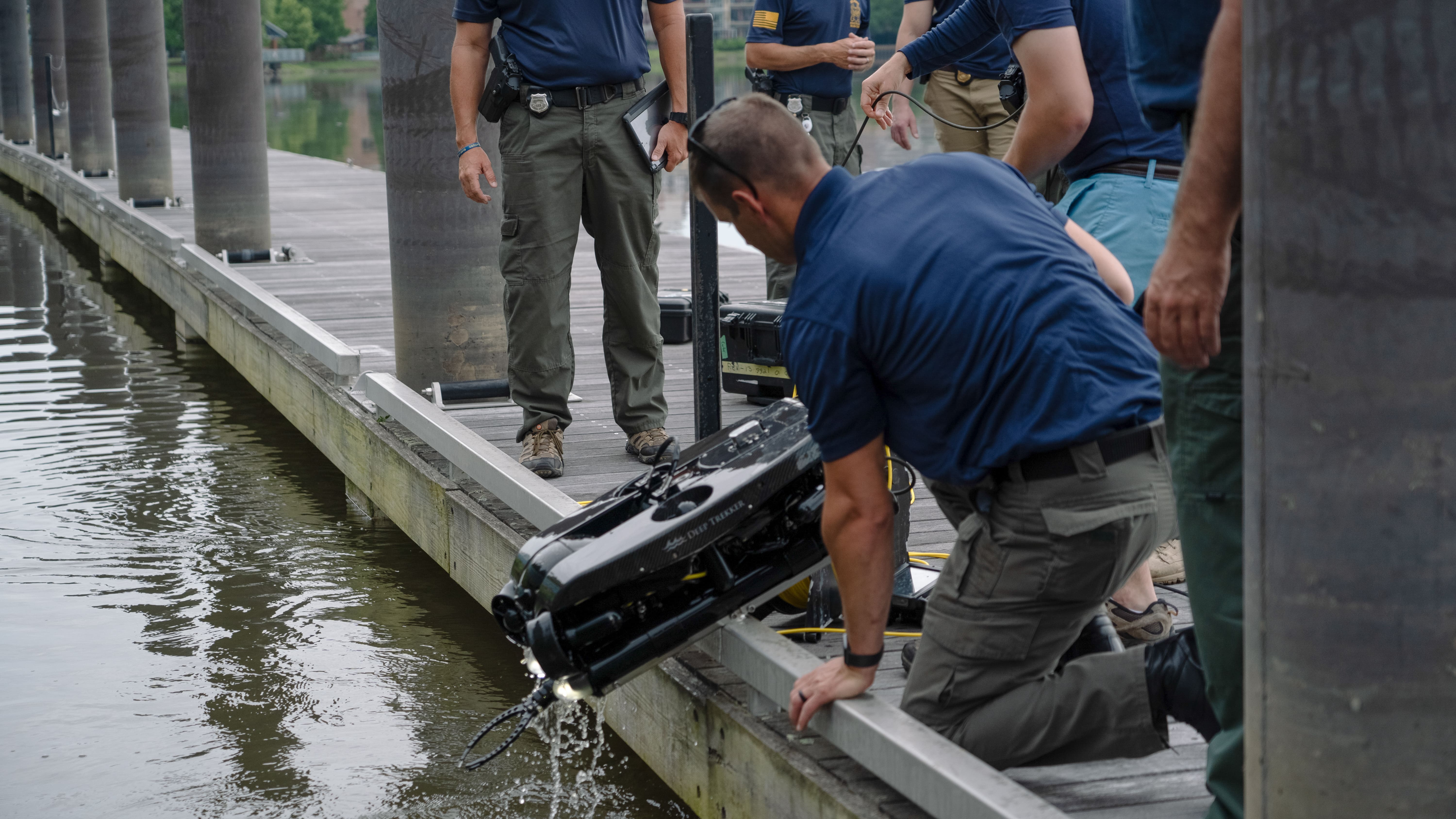
We recognize the crucial role speed plays in search and recovery missions, where every moment counts for first responders who risk their lives to bring lost souls back to their loved ones and provide closure. Deep Trekker ROVs are specifically designed to enhance safety and efficiency in these critical operations. By equipping search and recovery teams with our submersible robots, we aim to provide the proper tools that make missions safer, more effective, and faster, ultimately assisting in achieving successful outcomes.
"To be honest with you, probably 50% of the recoveries we've done with the ROV, we were actually able to see the victim from the surface with the ROV by tilting down and using the sonar to pick that target up. And then we just work our way to the target. So speed, speed, speed,” explains Seagroves. You only have to go down one time, which is what the Deep Trekker allows us to do, because we have a visual on our target, we know exactly what we're going after. We go down one time, we execute the recovery or the rescue, and then we're back up to the surface and that's it."
Our team of industry professionals is always available to offer expert guidance and address any questions you may have regarding the integration of submersible robots into your next project. Whether you are exploring underwater inspection, search and recovery, aquaculture, environmental monitoring, or any other application, we are here to assist you in understanding how our ROVs can benefit your specific needs. When you are ready to acquire your own Deep Trekker vehicle, reach out to us for a customized quote tailored to your requirements.
January 29th, 2024
Deep Trekker's strategic expansion into the UK & Ireland market reflects...
October 5th, 2022
Inspecting turbine blades is critical to plan maintenance and avoid downtime....
April 19th, 2023
Our Certified Service Partner in Norway, ROVpartner came to visit us...